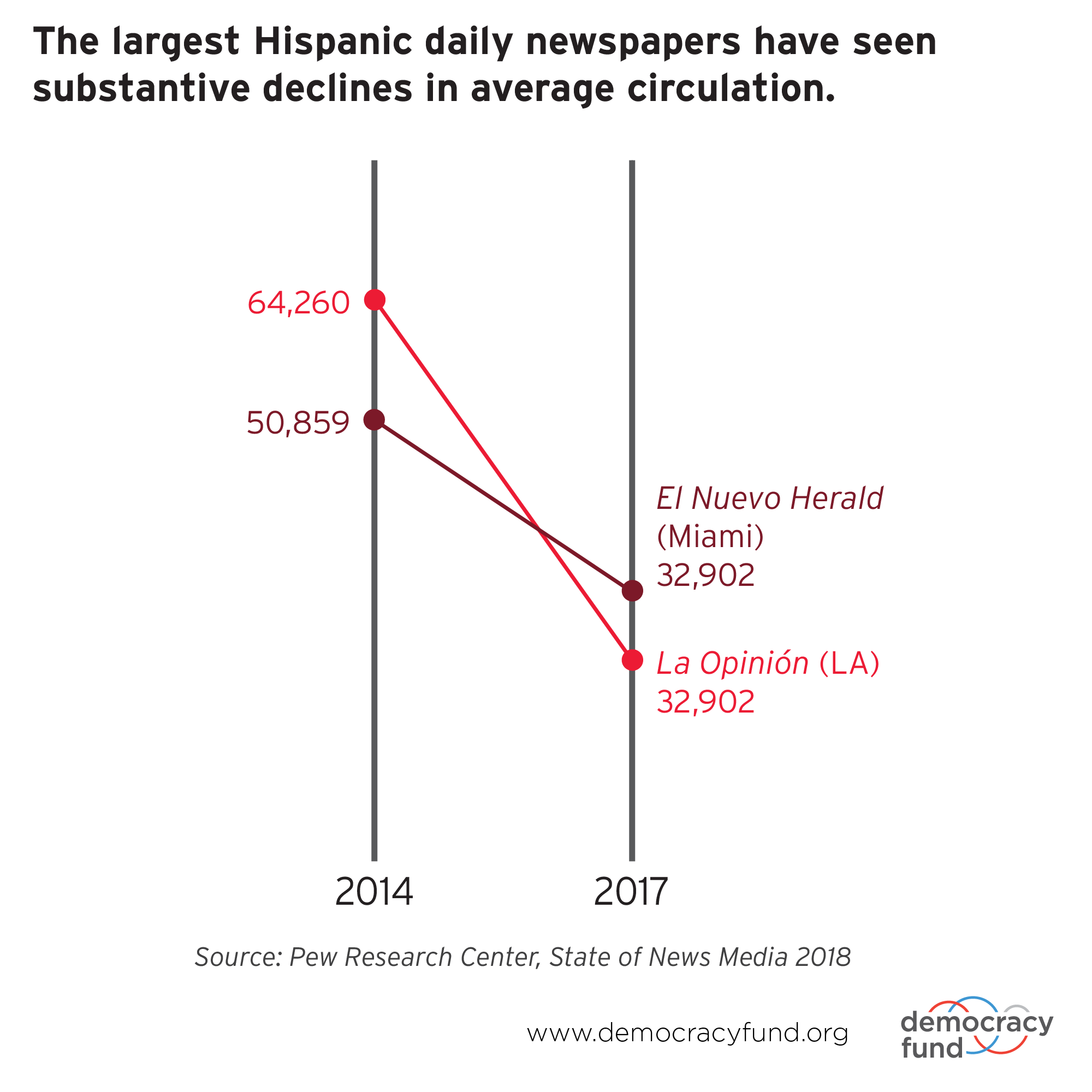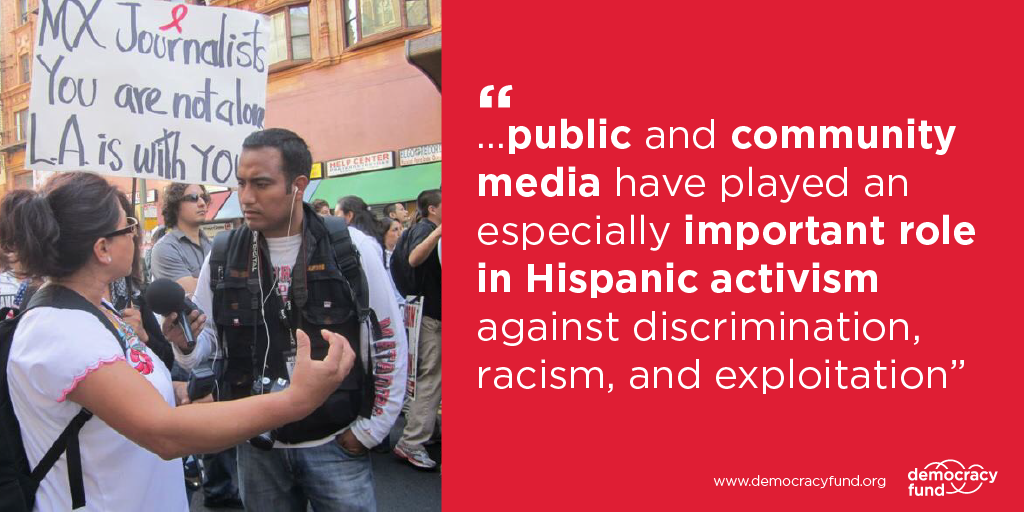There are almost-weekly reminders about the struggles facing local news. Last week the entire staff of the New Orleans Times-Picayune were laid off when the paper was sold to a competing paper. When 14 staff were laid off at the Cleveland Plain Dealer in April, it fell to one of those laid-off staff to cover the story. Zooming out, these individual stories fit into a troubling trend: America has lost nearly half its newspaper staff between 2008 and 2017, and almost 1,800 newspapers have closed their doors since 2004.
In the face of these struggles, the annual NewsMatch campaign, now entering its fourth year, provides a number of important lessons for how we can strengthen and support local news. NewsMatch is a national campaign that helped newsrooms around the country raise more than $7.6 million from hundreds of thousands of donors at the end of 2018. Today NewsMatch is releasing its annual learning report, which documents how the campaign meets three interlocking goals: Raising awareness about the role of journalism in our society, expanding community support and funding for news, and strengthening newsrooms’ long-term fundraising capacity.
We know raising awareness is a pressing need because the Pew Research Center recently found that 70 percent of U.S. adults think local journalism is doing well financially and only 14 percent have directly paid for local news. For local news in America to thrive newsrooms will have to dramatically shift public perception by engaging more deeply with audiences, documenting the impact of their journalism, and being transparent about the challenges they face. NewsMatch is creating new pathways both to raise awareness about the crisis in local news and enabling people to take action by supporting the quality journalism our nation needs.

Building Public Awareness About Nonprofit News
Between Nov. 1 and Dec. 31, 2018, the campaign helped 154 nonprofit news organizations across the country raise more than $7.6 million in unrestricted funding, which is being invested in more and better journalism, crucial general operating support, and improved fundraising capabilities. Since 2016, NewsMatch has helped nonprofit newsrooms raise more than $15.8 million for reporting and operations.
Core to the success of NewsMatch is how the program has helped spark a new kind of local and national conversation about the role of nonprofit news in America. The campaign runs a national awareness effort, provides 500+ hours of training to local and investigative newsrooms, creates a campaign-in-a-box toolkit for participants, and coordinates a national day of action called #GivingNewsDay in partnership with Giving Tuesday. These and other resources help newsrooms communicate their value and work to their community and ask for support, reminding people that good journalism shapes every other issue they care about.
The public is noticing. In two months — November and December of 2018 — over 240,000 people gave to news organizations. That is more than digital subscriptions to the Seattle Times, Boston Globe, Star-Tribune, and Dallas Morning News combined, according to a recent Wall Street Journal report. Critically, 52,000 of those donors were new and were supporting a nonprofit news organization for the first time. The year before, in 2017, 43,000 new donors gave for the first time during NewsMatch, for a two-year total of 95,000 new donors.

The learning and evaluation report released today outlines how the team behind NewsMatch designed the 2018 campaign, what worked and what didn’t. It covers how NewsMatch operates, what we are learning about building community support for journalism and the impact the campaign is having on newsrooms, donors and philanthropy.
Helping Foundations See Local News as a Priority
In examining the lack of understanding of the local news crisis last month in Bloomberg, Gerry Smith wrote last month that many people “have yet to conceive of journalism as a critical component of a free society, and may not think of a newsroom in the same way they do the Salvation Army or the American Red Cross.” This disconnect persists even though a growing body of research has mapped our how the erosion of local news is tied to lower voter turnout, fewer candidates running for office, less responsive elected representatives, and an increase in corruption and government waste. It is not enough to expand individual donations, we must also create new on-ramps for local and national foundations to support nonprofit news. According to an analysis released last year by Northeastern University and Harvard’s Shorenstein Center local news comprised only 5% of total grants given to media from 2010 to 2015.
That is why NewsMatch is also creating new on-ramps for local and national foundations around the country to easily support and strengthen nonprofit journalism. NewsMatch has been designed as an open and trusted place for funders who want to invest in local news and investigative reporting and learn more about effectively supporting journalism. In 2018, NewsMatch continued to drive new philanthropic dollars to participating newsrooms:
- The national matching fund grew to $3.7 million, an increase of 116 percent. Seven funders contributed to the national fund.
- Regional and issue-focused funders offered partner matches for cohorts of newsrooms (for examples, newsrooms reporting on sciences and health, investigative newsrooms in the South, Colorado news outlets, etc.). Four funders set up these targeted matches alongside the main fund.
- Participating newsrooms independently leveraged their participation in NewsMatch to secure more than $675,000 in additional, direct matches for their year-end campaigns. (This was down a bit from 2017.)

The campaign helps funders make the most out of their dollars by matching them with individual donations and supporting long-term capacity building in newsrooms. That capacity building work is starting to pay off. In a year when nonprofits overall only saw 1.5 percent year-over-year growth in individual donations, the average NewsMatch participant raised 11 percent more during the campaign in 2018 vs 2017. Small and medium newsrooms saw the biggest growth in year-end support, with 30+ percent increases in individual donors, donations, and dollars raised during NewsMatch. While the dollars raised during NewsMatch 2018 are notable, the real success is how the program is building long-term capacity for newsrooms to build meaningful connections with communities as readers and donors.
Growing the Campaign in 2019
Part fundraising program, part capacity building effort, and part public awareness campaign, NewsMatch achieves a complex set of goals while making it as easy as possible for anyone — individual donor, newsroom, funder — to participate. The Nieman Journalism Lab’s Christine Schmidt described how these elements come together, writing: “The campaign caught the budding nonprofit news sector at a critical stage in its growth and is giving it a jetstream by helping coach newsrooms, funders, and individual donors into seeding its future.”

NewsMatch was founded in 2016 by the John S. And James L. Knight Foundation and each year the number of NewsMatch participants has grown. That growth puts pressure on the national matching fund and we are currently seeking new and additional partners to support NewsMatch for 2019 and 2020. Support for NewsMatch 2018 was provided by the Colorado Media Project, Democracy Fund, Ethics and Excellence in Journalism Foundation, Facebook Journalism Project, John D. and Catherine T. MacArthur Foundation, Knight Foundation, Jonathan Logan Family Foundation, Present Progressive Fund at Schwab Charitable, Rita Allen Foundation, and Wyncote Foundation in partnership with The Miami Foundation, Institute for Nonprofit News and News Revenue Hub.
If we can together raise $5 million dollars for the national fund we can turn it into more than $10 million for local and investigative journalism this year. (If you are interested in exploring how to get involved in NewsMatch, or to set up a partner fund for a region or issue you care about, email Josh Stearns, jstearns@democracyfund.org.)
Based on what we learned from the 2018 campaign we are going to be making the materials and training more customized to serve the growing list of newsrooms who are at very different stages of growth and development. The NewsMatch team will also be working to better support organizations serving underrepresented communities and led by people of color. We recognize that it is critical for NewsMatch to do more to engage, listen, and serve these newsrooms, especially in light of longstanding inequities in how philanthropy has funded these organizations and communities. Finally, we will explore collaborations with others across the media landscape, beyond just nonprofit news, that can help drive more attention to the crisis in local news and the profound need to support it right now.
NewsMatch 2019 will kick off in November of 2019, but there is a lot of work to do before then. Find out more at NewsMatch.org and follow the campaign on Twitter and Facebook.










